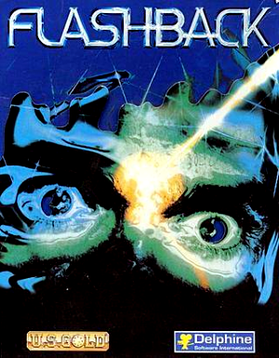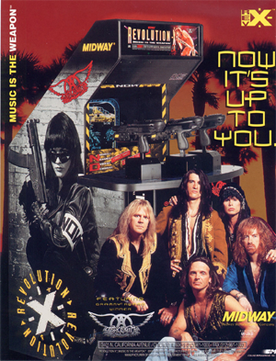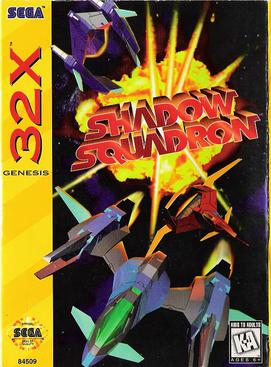
SimEarth: The Living Planet is a life simulation game, the second designed by Will Wright, published in 1990 by Maxis. In SimEarth, the player controls the development of a planet. English scientist James Lovelock served as an advisor and his Gaia hypothesis of planet evolution was incorporated into the game. Versions were made for the Macintosh, Atari ST, Amiga, IBM PC, Super Nintendo Entertainment System, Sega CD, and TurboGrafx-16. It was re-released for the Wii Virtual Console. In 1996, several of Maxis' simulation games were re-released under the Maxis Collector Series with greater compatibility with Windows 95 and differing box art, including the addition of Classics beneath the title. SimEarth was re-released in 1997 under the Classics label.

Sonic the Hedgehog CD, simply known as Sonic CD, is a 1993 platform game developed and published by Sega for the Sega CD. As Sonic the Hedgehog, the player attempts to protect an extraterrestrial body, Little Planet, from Doctor Robotnik. Like other Sonic games, Sonic runs through themed levels while collecting rings and defeating robots. Sonic CD introduces time travel as a game mechanic. By traveling through time, players can access different versions of stages, featuring alternative layouts, music, and graphics.

Chaos Control is a rail shooter developed by Infogrames Multimedia and published by Philips Interactive Media for the CD-i, MS-DOS, Macintosh, Sega Saturn and PlayStation in 1995. The game's cutscenes are rendered in a style reminiscent of anime.

Sonic the Hedgehog Spinball, also known as Sonic Spinball, is a 1993 pinball video game developed by Sega Technical Institute and published by Sega. It is a spinoff of the Sonic the Hedgehog series. Players control Sonic the Hedgehog, who must stop Doctor Robotnik from enslaving the population in a giant pinball-like mechanism. The game is set in a series of pinball machine-like environments with Sonic acting as the pinball.

Space Ace is a LaserDisc video game produced by Bluth Group, Cinematronics and Advanced Microcomputer Systems. It was unveiled in October 1983, just four months after the Dragon's Lair game, followed by a limited release in December 1983 and then a wide release in Spring 1984. Like its predecessor, it featured film-quality animation played back from a LaserDisc.

Flashback, released as Flashback: The Quest for Identity in the United States, is a 1992 science fiction cinematic platform game. It was developed by Delphine Software of France and published by U.S. Gold in the United States and Europe, and by Sunsoft in Japan.

Revolution X is a shooting gallery video game developed by Midway and released in arcades in 1994. The gameplay is similar to Midway's earlier Terminator 2: Judgment Day, but is themed around the band Aerosmith. The oppressive New Order Nation regime and their leader Helga have abducted Aerosmith, and players use a mounted gun to control onscreen crosshairs and shoot enemies. The members of Aerosmith are hidden throughout the game's international locales and must be found in order to receive the game's true ending.

Star Wars: Rebel Assault is a 1993 rail shooter video game developed and published by LucasArts for DOS, Macintosh, Sega CD and 3DO Interactive Multiplayer systems, set in the Star Wars universe. It is the first CD-ROM-only game to be published by LucasArts. The game's story focuses on a young pilot called Rookie One as they are trained by, and subsequently fights for, the Rebel Alliance in the Galactic Civil War.

Panic! is a puzzle point and click video game developed by Sega and Office I and published by Sega in Japan and Data East USA in North America for the Sega CD, in collaboration with the Theatrical Group WAHAHA Hompo. It was released on April 23, 1993 in Japan, localized to North America in October 1994, and later released for the PlayStation 2 in Japan on August 8, 2002. The game involves pressing numerous buttons in order to transverse a young boy, called Slap, or his dog, called Stick, through a complex labyrinth. It is one of the few Sega CD games that supports the Sega Mega Mouse.

Silpheed is a video game developed by Game Arts and designed by Takeshi Miyaji. It made its debut on the Japanese PC-8801 in 1986, and was ported to the Fujitsu FM-7 and DOS formats soon after. It was later remade for the Sega CD and has a sequel called Silpheed: The Lost Planet for the PlayStation 2.

Iron Man / X-O Manowar in Heavy Metal is a video game published by Acclaim Entertainment and developed by Realtime Associates for the PlayStation, Sega Saturn, Game Boy, Game Gear, and MS-DOS in 1996. It is a one or two-player side-scrolling action game in which the player battles villains from Marvel Comics' Iron Man and Valiant Comics' X-O Manowar comic book series. It was met with negative reviews which criticized it for dull gameplay and outdated graphics.

Soulstar is a hybrid rail shooter/third-person shooter video game developed and published by Core Design for the Sega CD in North America in September 1994, Europe in October by Core Design, and in Japan by Victor Entertainment on December 22.

Robotica, also known as Robotica Cybernation Revolt in Europe and Deadalus (ダイダロス) in Japan, is a first-person shooter video game developed by Micronet for the Sega Saturn.

Shadow Squadron is a space combat simulation video game developed and published by Sega exclusively for the 32X add-on first in Japan on 26 April 1995, then in North America and Europe in June of the same year.

Last Armageddon is a 1988 post-apocalyptic role-playing video game for the NEC PC-8801, MSX, Sharp X68000, MS-DOS, PC Engine CD-ROM², and Nintendo Family Computer. The game was exclusively in the Japanese language until an English translation patch was created for the Nintendo Famicom.

Android Assault: The Revenge of Bari-Arm, released in Japan as Bari-Arm (バリ・アーム), is a 1993 shoot 'em up video game developed and published by Human Entertainment for the Sega CD.

Shockwave Assault is a science fiction combat flight simulation video game developed by Advanced Technology Group and published by Electronic Arts for various home video game consoles and PCs. The player takes control of a futuristic fighter plane to defeat extraterrestrial ships and tripods.

Bloodshot, also released as Battle Frenzy in Germany, is a video game developed by Jim Blackler for Domark in 1995 for the Mega Drive and the Mega-CD in Europe. A North American release was planned, and reviewed in gaming magazines, but was only released through the Sega Channel service.

Black Hole Assault is a 1992 fighting video game developed and published by Micronet for the Sega CD. It was released in Japan by Micronet, in North America by Bignet USA as a launch title for the system and in PAL territories by Sega. The game is the sequel to Micronet's Heavy Nova.

Kileak: The DNA Imperative, known as Kileak: The Blood in Japan and Europe, is a first-person shooter video game developed by Genki and published by Sony Music Entertainment Japan for the PlayStation. Sony Computer Entertainment, SMEJ's sister company, released as a launch game for the console outside Japan. Kimitaka Matsumae, former member of the S.S.T. Band, wrote the game's soundtrack.



















